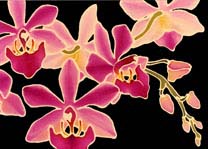Hybridizing with Phalaenopsis Species
by Bill Livingston
Phalaenopsis gigantea
|
This species is not commonly grown in many greenhouses in the U.S. I recommend you buy an established plant, because these plants are rather temperamental and do not like being moved or repotted. If you feel you must have this plant, please try to buy as large a plant as your pocketbook will allow. Do not pollinate P. gigantea flowers unless you have a strong-growing plant. Its large fleshy leaves can measure up to four to six feet each with a width of 16 inches. It has one or two pendulous, branching inflorescences 15 inches or more long with 70 or more flowers. Flower size varies from about 1.75 to 2.75 inches across, and blooms can emit a sweet fragrance. Flower color can vary, with the sepal and petals covered occasionally with reddish brown, maroon, purple or violet-brown blotches and bars, while the lip is white, with three bright magenta or carmine lines or stripes on each side of the median keel of the midlobe. A yellow form (P. gigantea f. flava} is quite beautiful with brownish blotching and marking on the flowers. This phalaenopsis is unique in that after the inflorescence grows out, it sits for nine months before it blooms. Its hybrids are quite colorful and very smog resistant because of the heavy substance of the flowers. They will breed rather easily, generally producing very pretty flowers, especially if they were hybridized with highly colored clones. They unfortunately produce small lips. The flowers are somewhat box shaped with rounded edges, but they can be quite attractive and well-spaced on the flower spike.
|
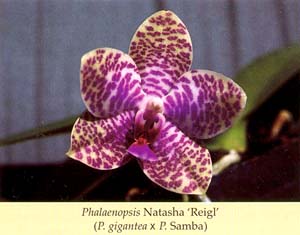
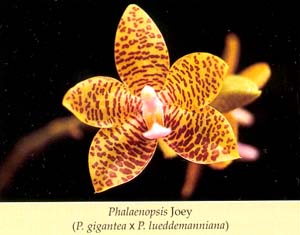
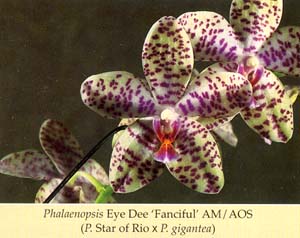
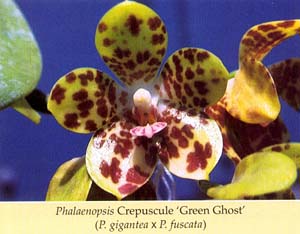
|



This article which has been reprinted here with permission, originally appeared in the Volume 66, Number 4 edition of Orchid Digest, (Oct-Dec 2002), which is a Special Edition that highlights Phalaenopsis, and also features an excellent article on Phal culture by the Tuskes. The Phalaenopsis Special Edition of Orchid Digest can be ordered from Orchid Digest for $22. Highly recommended.
This article, all of its sections and accompanying photographs
are copyright 2002 by Orchid Digest Corporation.
Note: This site uses Javascript Navigation Controls;
if you have Javascript disabled on your Browser,
you will need to use the Site Map to navigate this site.
|
